Physical Address
304 North Cardinal St.
Dorchester Center, MA 02124
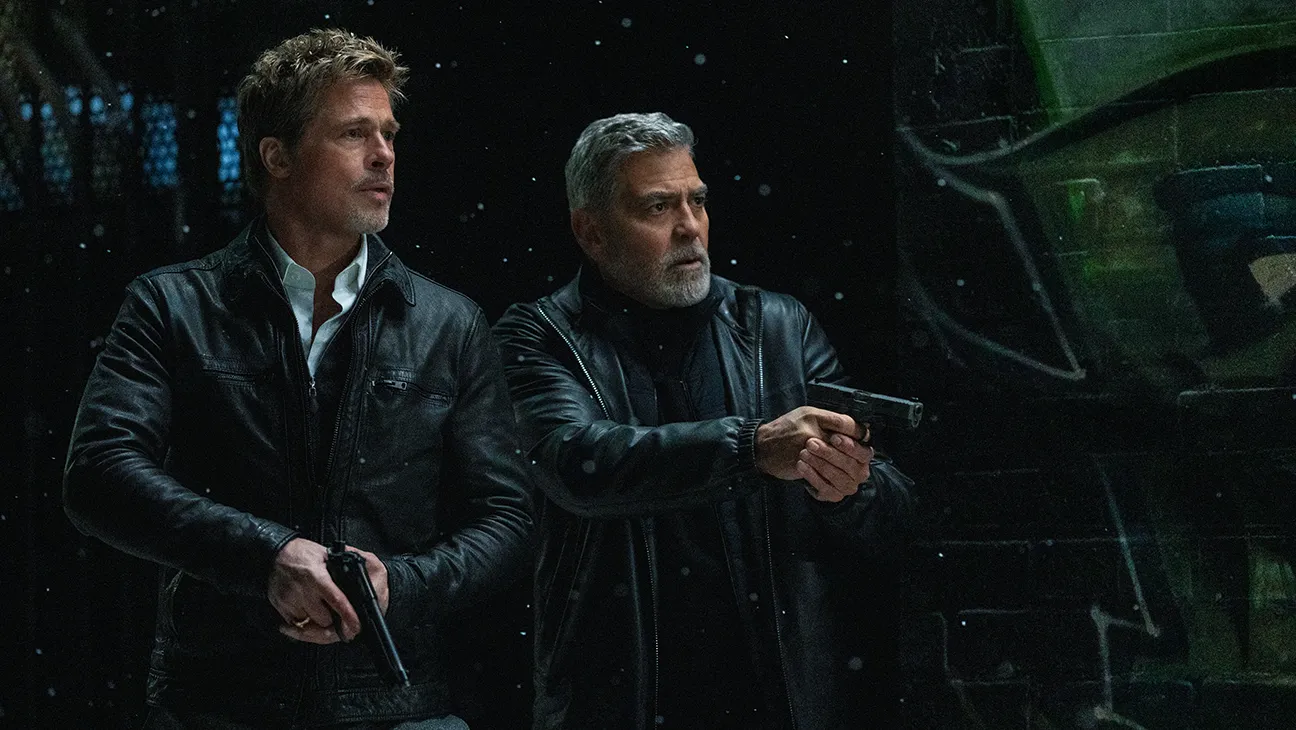
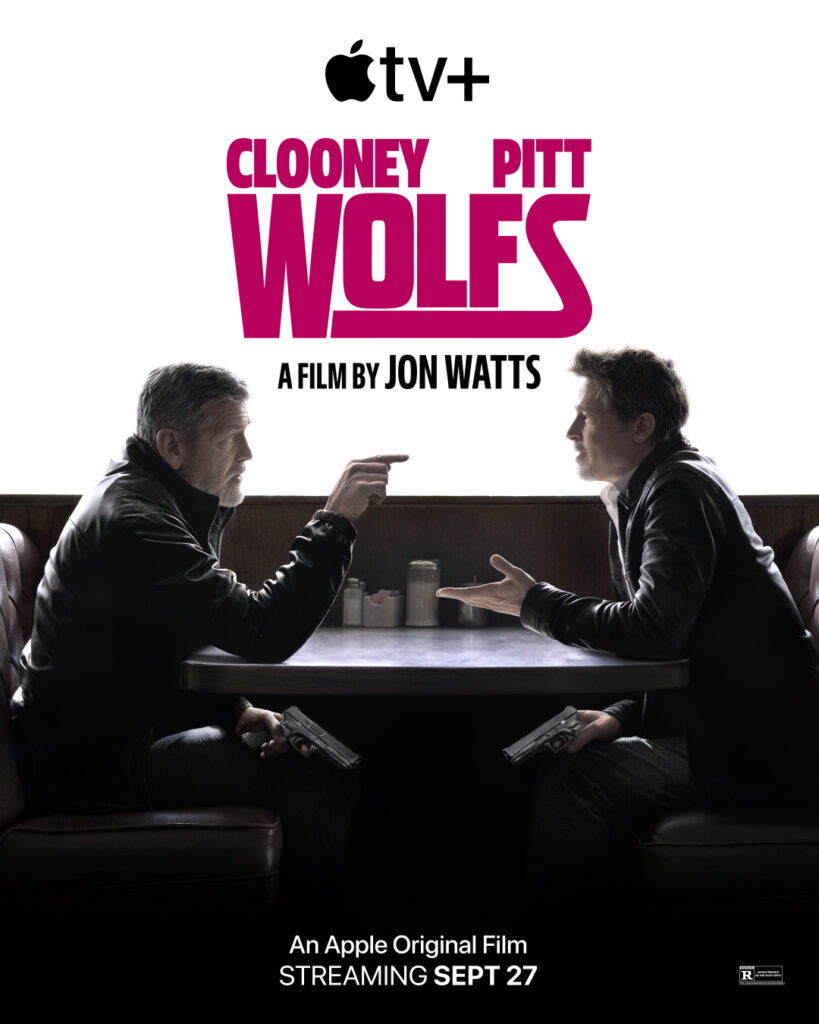
Wolfs may just be Apple TV+’s most charming surprise yet, delivering a sly, elegant twist on the action-comedy genre while channeling the relaxed confidence of cinema’s past. The film stands out as a fresh entry in Apple TV+’s carefully selected lineup, embodying a sense of cool restraint rarely seen in modern streaming content.
So far, my experience with Apple TV+ has been one of delightful discovery. Unlike other platforms that bombard viewers with a sheer quantity of content, Apple TV+ has taken a unique approach with its boutique selection, focusing on quality and craftsmanship. This platform curates each piece with a sense of purpose, creating a viewing experience that feels more intentional and thoughtful—a welcome change in today’s saturated streaming landscape.
Apple TV+’s restraint pays off with movies like Wolfs, which defies expectations for an action-comedy in all the right ways. The film stars George Clooney and Brad Pitt, both powerhouse names whose on-screen chemistry is legendary, yet Watts manages to use this star power with a light touch.
Clooney and Pitt, who previously teamed up in the Ocean’s films, return here with a dynamic that’s reminiscent of those roles yet distinct in its subtlety. Unlike the bustling, high-energy capers of the Ocean’s series, Wolfs trades large-scale heists and ensemble antics for a more focused, intimate story where character-driven moments take precedence over spectacle.
Directed by Jon Watts—known for his work on Marvel’s Spider-Man trilogy, including Spider-Man: Homecoming, Far From Home, and No Way Home—the film brings a surprisingly refined sensibility to the action-comedy genre. Watts, whose experience in the MCU familiarized him with large-scale action, takes a noticeably restrained approach here.
Instead of the flashy CGI and big set-pieces characteristic of superhero movies, he draws on his earlier indie thriller roots (seen in Cop Car, another film known for its minimalist suspense) to craft a world of quiet intensity, humor, and a kind of old-school charm that feels refreshing. In fact, Wolfs feels like a confident throwback, evoking the effortless charm and laid-back tone of classics like Butch Cassidy and the Sundance Kid or The Sting, where charm, charisma, and witty banter are as essential to the story as any action sequence.
In Wolfs, Clooney and Pitt play rival fixers navigating a high-stakes, high-profile clean-up job in New York City. Despite the suspenseful plot, the movie unfolds at a relaxed pace, giving the audience time to absorb the dialogue, the subtleties of the performances, and the chemistry between these two seasoned actors. This style is particularly refreshing in today’s landscape, where action films often feel compelled to pile on tension, twists, and effects to hold the viewer’s attention. Here, Watts does the opposite—he allows moments to breathe, using pauses, glances, and subtle gestures to convey just as much as, if not more than, the dialogue itself.
Apple TV+ made an unexpected choice in bringing Wolfs to its streaming lineup. As a platform that emphasizes thoughtful, refined storytelling, Apple TV+ is the perfect home for a movie like Wolfs that doesn’t conform to mainstream conventions. It’s a film that feels as curated as the platform itself, as if it were chosen specifically to stand as a counterpoint to the relentless, fast-paced action flicks dominating today’s theaters. Clooney and Pitt’s restrained performances, coupled with Watts’ minimalistic directing style, create a kind of easygoing elegance that is rare in today’s action-comedy genre.
In this way, Wolfs does more than simply entertain—it feels like a quiet statement on the power of simplicity and the appeal of a well-crafted story. Where other films might prioritize fast cuts, heavy effects, and ever-escalating stakes, Wolfs brings us back to the basics, proving that sometimes, less truly is more. Apple TV+ has shown that it’s willing to take chances on movies that might not fit the formulaic approach of other studios. And in doing so, they’ve given us a true gem—a reminder that star power, a tight script, and nuanced direction can still create magic when allowed to unfold at their own pace.
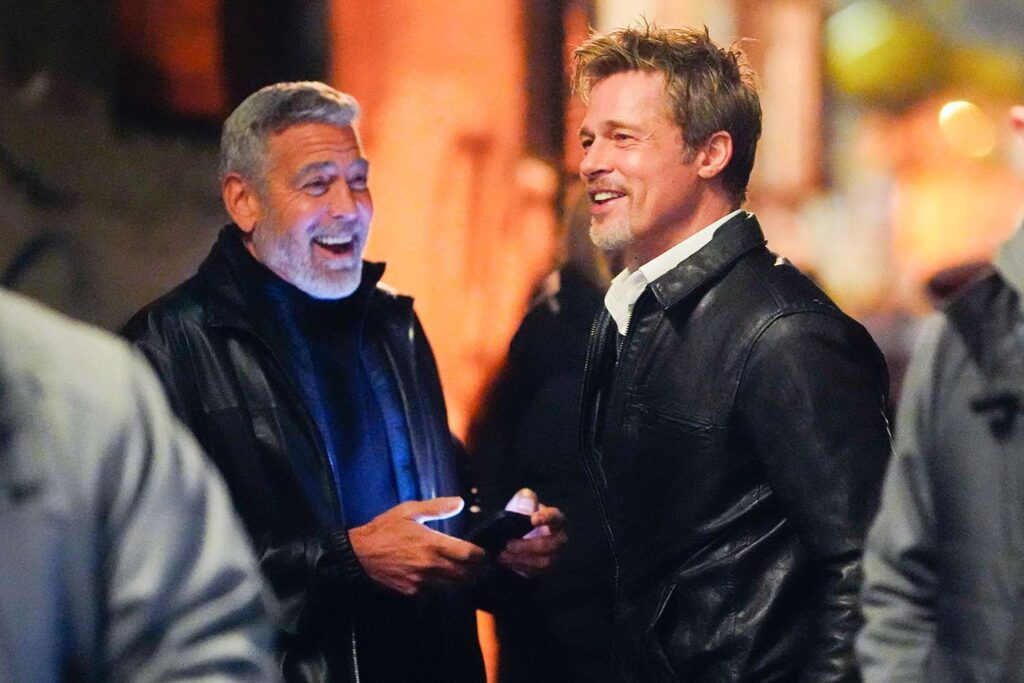
Going into Wolfs, I wasn’t entirely sure what to expect. Clooney and Pitt have teamed up before in the Ocean’s series, but while those films were fun romps filled with Hollywood’s biggest names, they sometimes felt more like star-studded showcases than compelling stories.
The Ocean’s movies, for all their glitz, were often driven by the spectacle of seeing so many famous faces gathered in one place rather than by any truly gripping plot or character depth. They leaned heavily on the audience’s enjoyment of seeing Clooney, Pitt, and other A-listers interact rather than on the organic development of suspense or emotional stakes.
With Wolfs, my anticipation was mixed with skepticism. Directed by Jon Watts, primarily known for the Marvel Spider-Man trilogy (Spider-Man: Homecoming, Far From Home, and No Way Home), I wondered how Watts’ superhero storytelling style—typically packed with energy, fast pacing, and elaborate effects—would translate to a quieter, character-driven thriller.
I wasn’t sure how Watts, known for his flashy MCU direction, would approach a film that seemed to require a subtler, more restrained touch. Would it have the same over-the-top flair as a superhero film, or would Watts be able to adjust his approach to let the tension and characters breathe? I had my doubts about whether this would be a match of style and substance.
But from the opening scene, Wolfs defied my expectations, gradually dissolving my initial skepticism. The film opens with an unexpectedly tense, atmospheric shot of a New York City high-rise apartment, the darkened, moody setting immediately pulling the viewer into an aura of suspense. In this dimly lit room, we find a visibly distressed Amy Ryan, who many will recognize as Jan from The Office.
Known for her often comedic role on television, seeing her in this serious, high-stakes context was an intriguing surprise. She captures the fear and desperation of her character, Margaret, so well that I was immediately drawn in. Her panicked search for a phone to call for help, with every attempted call leading to more dead ends, sets a perfectly uneasy tone for the movie. Ryan’s performance is raw and intense, and her palpable dread gives the entire scene a sense of immediacy and vulnerability that feels refreshingly unpolished.
The film’s lighting and cinematography elevate this opening scene, immersing viewers in a world where suspense is built from subtle elements rather than from dramatic action sequences. There’s a deliberate, almost understated aesthetic to this opening that feels worlds away from Watts’ usual high-energy, CGI-laden scenes in the Spider-Man films. The lighting, dim and shadowed, mirrors the tension in Ryan’s performance and makes her panic feel even more tangible. It’s clear from these early moments that Wolfs has no intention of relying on spectacle; instead, it draws the viewer in with atmosphere, focusing on nuanced acting, visual restraint, and thoughtful pacing.
Ryan’s portrayal of Margaret quickly hooked me. Her character’s dread, her attempts to call for help, and the quiet desperation as she maneuvers around the dark apartment created a unique ambiance that wasn’t flashy or rushed. Her fear feels genuine, intensified by Watts’ carefully controlled pacing and the clever use of quiet tension.
The slower pacing in this scene allows the audience to absorb every small detail, from the hushed tones of the dialogue to the unease in Margaret’s expression as she realizes the gravity of her situation. It’s the kind of quiet intensity that’s rare in mainstream thrillers today, where there’s often a compulsion to kick off with immediate action rather than letting tension simmer.
This unexpectedly unpretentious approach is what sets Wolfs apart from many modern action comedies. Rather than trying to captivate the viewer with fast cuts and loud explosions, the film takes a more elegant, refined path that feels almost nostalgic. As the scene shifts and George Clooney’s character, Jack, enters the picture, this sense of quiet intensity only deepens.
Jack’s cool demeanor and relaxed confidence contrast with Margaret’s fraught state, making his entrance feel both reassuring and disconcerting at once. Clooney, with his effortless charm and calm presence, brings a touch of classic cool to the scene, almost like a character out of a 1970s thriller. His character’s control and calm composure created an interesting juxtaposition with Margaret’s fear, heightening the suspense without resorting to heavy-handed action.
Watching Clooney and, later, Brad Pitt embody their roles with such laid-back ease felt like a throwback to a different era of cinema, where the charisma of the actors was enough to carry the story. In Wolfs, their star power isn’t just a gimmick; it serves the story, bringing a subtle gravitas to their characters that amplifies the film’s suspense.
The restrained style, combined with the cast’s undeniable screen presence, allows Wolfs to draw viewers in without relying on high-stakes action or an overly complicated plot. Instead, it’s the kind of film that reminds us of the power of simplicity in storytelling—a reminder that sometimes, all you need are seasoned actors, a well-chosen setting, and a willingness to let the story unfold at its own pace.
In this opening scene alone, Wolfs reveals itself as a film that respects its audience’s intelligence and patience. It avoids the pitfall of trying to do too much too soon. By the time the scene ended, my initial doubts about the film’s low-key style and Watts’ ability to transition from the superhero genre had been replaced with a sense of appreciation. Wolfs had me intrigued not because of any spectacular effects or intense action, but because it had managed to establish an authentic mood and build suspense naturally, from the ground up. This was a rare kind of elegance—an understated, old-school charm that I didn’t expect but instantly appreciated.
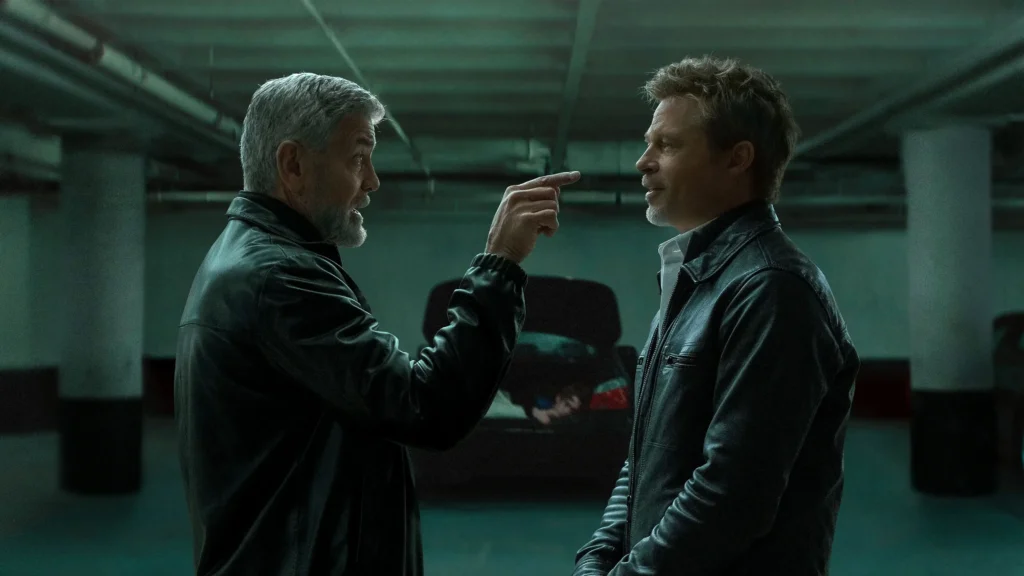
What makes Wolfs stand out in today’s action-heavy film landscape is its deliberate pacing and unapologetically simple plot. It doesn’t rush to create high-stakes tension at every turn or feel the need to bombard viewers with a relentless stream of action. Instead, Wolfs brings a refreshing approach that allows the story to unfold naturally, focusing more on the charm and chemistry of its leads, George Clooney and Brad Pitt, rather than on elaborate twists or over-the-top stakes.
In Wolfs, Clooney’s character, Jack, and Pitt’s character, Nick, are two seasoned fixers forced to collaborate on a high-profile cleanup job in the heart of New York City. As they encounter one another on the job, their professional rivalry and stubborn personalities begin to clash in ways that are both humorous and subtly intense.
But rather than playing this rivalry out through constant confrontations or intense, fast-paced action sequences, Wolfs takes a more laid-back, easygoing vibe that’s anchored by the undeniable charisma of its stars. In this way, the film prioritizes character development and dialogue over spectacle, making it more about two cool, collected individuals navigating a job together—and reluctantly bonding over the unexpected challenges they face.
This tone is a conscious choice that sets Wolfs apart from the standard action film formula, where constant adrenaline spikes and overly complex plot developments tend to dominate. By comparison, Wolfs almost feels meditative, allowing Clooney and Pitt to showcase a relaxed, confident style that mirrors the easy charm of classic cinema. There’s a subtle humor to their interactions, built more on witty banter and unspoken tension than on dramatic conflict or high-speed chases. This restraint not only gives the audience a chance to appreciate the depth of their characters but also lets the suspense build in an organic, understated way.
The film doesn’t feel the need to “up the stakes” constantly. Instead, it allows us to savor the cool, unhurried rapport between Jack and Nick, drawing us into their reluctant partnership in a way that feels both nostalgic and refreshingly authentic.
The film’s pacing is deliberate, a choice that’s evident even in the way it frames each scene and allows moments to linger. Watts, perhaps drawing from his experience with indie films, brings a restrained directorial touch that contrasts with his usual work in the high-energy Spider-Man franchise. Here, he’s focused on subtleties, the tension in a pause, the meaning behind a look, the humor in a sigh of exasperation.
Each moment between Clooney and Pitt is given space to breathe, and the film becomes as much about their unspoken rivalry as it is about the plot. In one memorable scene, the two fixers find themselves having to “work together,” yet each tries to one-up the other with their skills and resources. The humor in this scene isn’t loud or forced; instead, it comes from the sheer absurdity of two seasoned professionals engaging in a subtle game of one-upmanship, each confident that they are the best at what they do.
This calm, calculated tone is a refreshing departure from the high-intensity pacing of most modern action movies, which often feel the need to overdeliver with fast cuts, explosions, and dramatic scores. Wolfs dares to keep things simple, confident in the power of its dialogue, the charisma of its leads, and the strength of its setting to keep viewers captivated. It’s as if the film is saying, “Trust us; we don’t need to shout to be heard.”
In doing so, Wolfs creates a distinctive tone that is as much a throwback to classic cinema as it is a quiet statement on the enduring appeal of understated storytelling. Perhaps what makes this approach so effective is that it doesn’t just showcase Clooney and Pitt as characters but allows them to inhabit their roles as two complex, aging professionals who have seen it all.
Their casual banter, mutual disdain, and reluctant respect for one another slowly build a layered dynamic that would have been lost in a louder, faster-paced film. Instead of pushing them through one high-stakes situation after another, Wolfs takes a slower, steadier path, letting the suspense simmer beneath the surface while giving the audience time to engage with the characters.
One particular scene perfectly illustrates this. As Jack and Nick confront one another, each subtly trying to outdo the other, the audience is drawn not by fear of what will happen but by the pleasure of watching two actors who know exactly how to balance intensity with humor. Watts’ choice to hold back on the action and allow tension to build organically through these exchanges is a rare and commendable feat in today’s cinema.
Rather than moving quickly from one crisis to the next, Wolfs stays grounded, letting us focus on the characters’ personalities and the understated comedy that arises from their predicament. In essence, Wolfs is a film that isn’t afraid to be quiet, to let tension bubble beneath the surface rather than explode at every moment.
It doesn’t feel the need to follow every beat of a traditional action movie, and that’s precisely what makes it so engaging. By stepping back from the relentless action of its peers, Wolfs creates a laid-back energy that feels both timeless and refreshingly new—a film that invites you to sit back and enjoy the ride, to savor the moments of stillness, and to revel in the chemistry of two pros who make it all look so easy.
For those looking for a film that combines the thrill of suspense with the relaxed charm of classic cinema, Wolfs is a refreshing alternative to the typical action fare. It proves that sometimes, all you need are two characters, a simple plot, and the space to let the story breathe. Clooney and Pitt’s charisma and Watts’ restrained direction come together to create a film that’s not just another action flick but a quiet, confident celebration of storytelling at its finest.
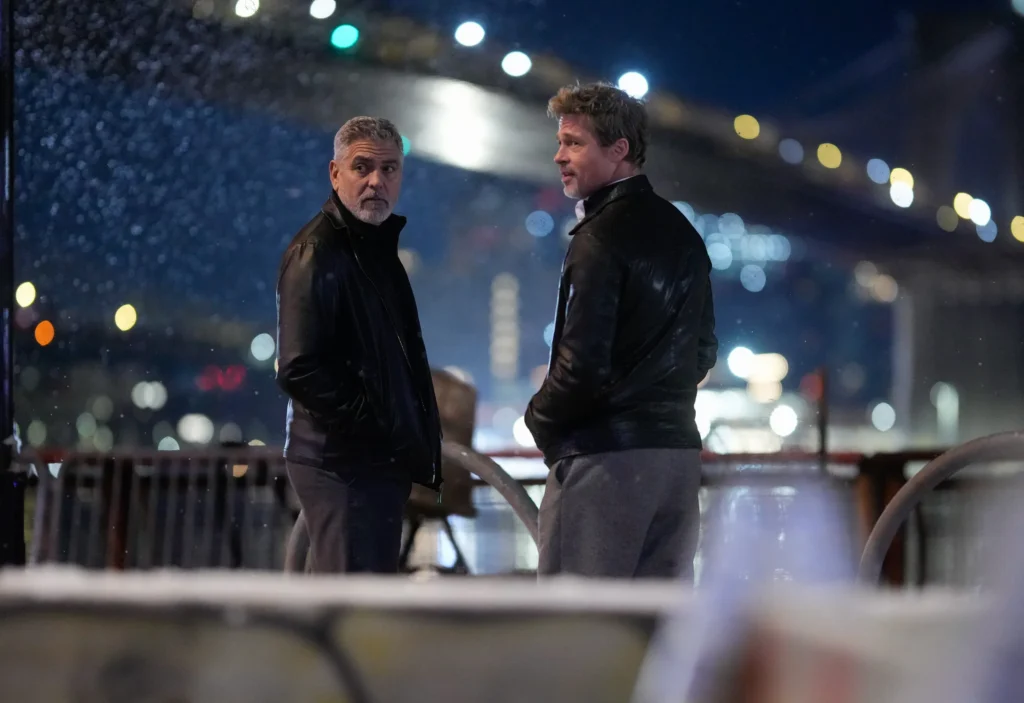
What truly makes Wolfs such an engaging watch is the electric dynamic between George Clooney and Brad Pitt. They play off each other with the ease of actors who have spent years refining their craft and honing their on-screen personas. Clooney’s Jack and Pitt’s Nick are the ultimate “cool guys”—unflappable under pressure, razor-sharp with their humor, and just cynical enough to make their banter sizzle. Watching these two veteran actors engage is a treat, as they bring a natural charisma that elevates every scene.
From the start, it’s clear that Jack and Nick aren’t the type to go through the usual dramatic tropes of high-strung action heroes. Instead, they carry a calm, almost bemused attitude toward the chaos around them. They embody a classic buddy dynamic reminiscent of iconic pairs like Mel Gibson and Danny Glover in Lethal Weapon or John Travolta and Gene Hackman in Get Shorty, where mismatched personalities don’t just create friction, they create chemistry. Jack’s relaxed demeanor and subtle superiority clash hilariously with Nick’s slightly cocky attitude, setting the stage for a series of interactions where tension and humor blend seamlessly.
This dynamic plays out brilliantly in scenes where their professional rivalry and subtle disdain for each other’s methods lead to deadpan exchanges. Clooney and Pitt know precisely when to deliver a quip, when to let the silence linger for impact, and when to bring out just the right amount of irritation. There’s a scene where Nick reveals that he’s technically Jack’s “supervisor,” a revelation that frustrates Jack to no end.
Watching Clooney’s subtle irritation clash with Pitt’s smug satisfaction is a perfect example of how they balance tension with humor, allowing each moment to unfold naturally without forcing the comedy.
It’s a refreshing shift from the “serious action hero” trope that dominates much of today’s cinema. Neither Jack nor Nick takes himself too seriously, and both characters seem aware of the absurdity of their situation, which only makes their reluctant camaraderie more entertaining.
As the movie progresses, you get the sense that Jack and Nick have long since accepted the chaos of their profession—they’re past the stage of letting stress or panic show. This lack of melodrama creates a sense of easygoing confidence, a “cool” that feels effortless and genuine rather than manufactured. In every exchange, they walk the fine line between rivalry and mutual respect, ultimately revealing an underlying camaraderie born out of shared experiences.
One of the film’s standout scenes showcases this camaraderie beautifully. Jack and Nick find themselves working together on a task where they both bring their unique methods to the table. As they argue over the best approach, the scene shifts from mild tension to humor, as each tries to outsmart the other with his experience and wit. What could have easily turned into a showdown of egos instead becomes a hilarious exchange, with both men realizing that they’re equally matched and ultimately resigning themselves to working side by side.
This reluctant teamwork only enhances their chemistry, as they bicker and banter like two seasoned pros who, despite their differences, know they’re in the same game. There’s something undeniably nostalgic about watching two Hollywood icons embody characters who are perfectly aware of their own charisma yet refuse to flaunt it. Instead, Clooney and Pitt let their cool demeanor and understated performances carry the weight of their personalities, creating an atmosphere where their actions speak louder than words.
This quiet confidence recalls classic cinema’s approach to “cool”—an effortless style that doesn’t need fast cuts or dramatic flair to make an impact. They lean on the strength of their seasoned, almost weary confidence, making it clear that neither is new to this game, and that they know all too well how to handle themselves in high-pressure situations.
Another notable scene finds Jack and Nick in an unexpected confrontation with an adversary. Rather than facing off with fists or guns, they engage in a battle of wits and subtle intimidation. As the tension builds, their banter continues, but it’s layered with a quiet intensity that reveals just how well they can read each other and how deeply they understand the stakes.
Watching Clooney’s Jack size up the situation while Pitt’s Nick nonchalantly leans into his role as “supervisor” adds layers to the scene, revealing a relationship that is complex and rooted in years of experience. Their mutual disdain, respect, and underlying humor are perfectly balanced, bringing out the best in each actor’s performance.
This restrained, character-driven approach to suspense is a hallmark of Wolfs, where the focus is as much on the interaction between Jack and Nick as it is on the plot. In today’s action landscape, where characters are often defined by how well they perform in intense action sequences, Wolfs takes a step back, allowing its leads to engage in subtle, dialogue-driven conflicts that rely on timing, wit, and character depth rather than brute force. This scene, like many others, exemplifies how Watts allows Clooney and Pitt to revel in the small, nuanced moments that make their chemistry so enjoyable to watch.
By not taking themselves too seriously, Clooney and Pitt create a buddy dynamic that is as refreshing as it is entertaining. They both know they’re in on the joke—that the world of fixers, dead bodies, and cleanup jobs is as ridiculous as it is dangerous. And that’s what makes their characters so captivating: they embrace the absurdity with a wink and a nod, grounding Wolfs in a unique blend of suspense and humor. Their chemistry is more than just comedic relief; it’s the backbone of the film, a balancing act between rivalry and partnership that brings a new level of depth to the action-comedy genre.
Ultimately, Clooney and Pitt’s dynamic is what elevates Wolfs from being “just another action flick” to something truly memorable. Watching these two icons—both seasoned actors who know how to command the screen without overshadowing each other, is a reminder of the timeless appeal of well-matched co-stars.
Their performances in Wolfs bring back the charm of classic buddy films, where charisma and chemistry between leads can carry a story with ease. In a film where cool confidence and understated wit are paramount, Clooney and Pitt are masters of the craft, transforming Wolfs into a cinematic experience that’s as enjoyable for its characters as it is for its plot.
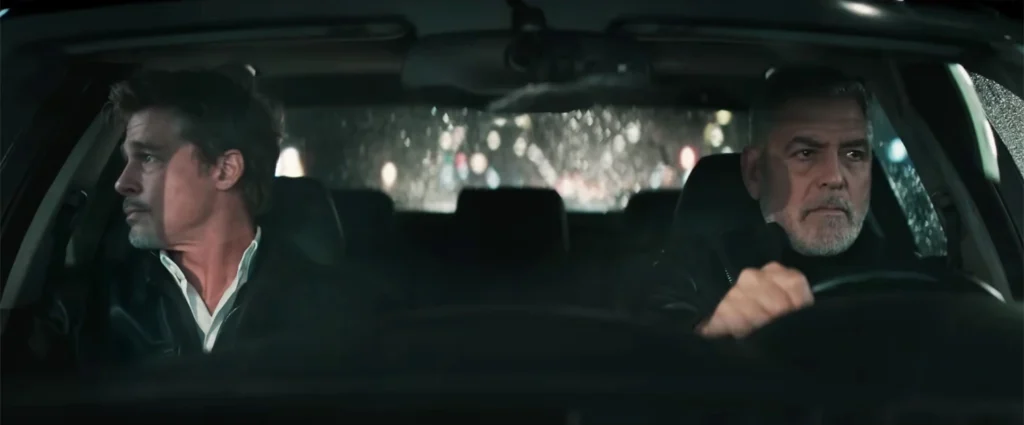
In an era when action films often feel overloaded with constant twists, complex narratives, and multiple antagonists, Wolfs opts for simplicity—and it’s all the better for it. Rather than trying to impress with a layered, intricate plot, Wolfs confidently sticks to the basics, allowing its characters and their journey to take center stage. There are no intricate conspiracies or world-ending stakes here. Instead, Jack and Nick’s mission remains focused: clean up the scene, handle the unexpected challenges, and survive the night. This pared-down approach serves as a refreshing reminder that sometimes the simplest stories are the most effective.
When Jack and Nick uncover a hidden stash of heroin as part of their job, it raises the stakes just enough to propel the story forward without overburdening it. This discovery introduces a classic complication that ramps up the tension, but it never feels like a forced twist. Rather than relying on shocking revelations or rapid plot shifts to keep the audience engaged, Wolfs uses this newfound complication to enrich the dynamic between its leads.
They encounter obstacles, surveillance cameras, rival fixers, dead bodies, and an entire mob of Albanian gangsters, all of which feel like organic extensions of their job rather than dramatic contrivances. This simplicity allows the film to echo the classic crime capers of yesteryear, where the thrill lay not in the number of plot twists but in how the characters navigated each unexpected turn.
As the story unfolds, Wolfs has a quiet confidence in its own pacing. Each encounter feels intentional and carefully placed, giving the film a sense of rhythm and control often lost in more chaotic action movies. Jack and Nick’s mission may escalate in complexity, but the film never loses its focus. It doesn’t bog itself down with unnecessary subplots or convoluted schemes; instead, it trusts in its leads to keep the audience engaged. The goal remains grounded in realism: they’re here to do a job, get paid, and get out. This objective adds to the film’s charm, as the stakes feel intimate and personal rather than grandiose, making the story feel surprisingly relatable.
One of the film’s standout sequences—a long, suspenseful chase through the winding streets of New York City’s Chinatown—exemplifies this elegant simplicity. By the time we reach this point, we’re fully invested in Jack and Nick’s survival, not because of the intensity of the chase itself, but because we’ve come to care about these two slightly out-of-their-prime fixers who are doing their best to make it through a single, chaotic night.
The chase scene is a slow burn, and it takes its time unfolding. It’s not laden with explosive stunts or over-the-top theatrics; instead, it emphasizes the narrow escapes, the desperate decision-making, and the gritty determination of two professionals who know their way around a high-stakes situation.
This climactic scene isn’t just about action; it’s about watching Jack and Nick navigate the underbelly of Chinatown with a calm, collected approach that’s rare in modern thrillers. The stakes are raised just enough to remind us that this job has consequences, but the film resists the urge to blow the situation out of proportion. Instead, it’s more like an intricately choreographed dance, where every move feels calculated, and every close call feels earned. The longer the chase goes on, the more it feels like a test of Jack and Nick’s endurance, skill, and trust in each other.
As the sequence reaches its peak, we’re left rooting for them not just because of the action, but because of the simple, relatable nature of their goal. They’re not out to save the world or protect some grand ideal; they’re simply trying to finish a job, survive, and go home.
This stripped-down motivation makes Wolfs feel grounded, almost cozy in its approach, as it invites the viewer to experience a night in the lives of these characters rather than a spectacle of high-stakes drama. In this way, Wolfs becomes a story of endurance, where the protagonists aren’t superhuman, and the obstacles they face feel grounded in a gritty realism.
In a world where every other action film seems to try to outdo the last with increasingly elaborate plots, Wolfs stands out for its restraint. It doesn’t feel the need to force Jack and Nick into situations that are overly complicated or twist-laden. Instead, it presents obstacles that are plausible within the context of their world, building a sense of authenticity that makes every moment feel engaging without ever overwhelming. This simplicity is a breath of fresh air, giving viewers room to appreciate the characters, the atmosphere, and the subtle humor that permeates each scene.
By keeping the plot straightforward and focusing on the chemistry between its leads, Wolfs achieves a level of storytelling that’s both elegant and effective. It proves that a good story doesn’t need to be convoluted to be captivating. Sometimes, all it takes is a simple premise, strong characters, and the willingness to let the plot unfold at its own pace. In Wolfs, the quiet elegance of a simple plot allows the film to be exactly what it is without forcing itself to be anything more—and in that simplicity, it finds its charm.
One surprising and delightful element of Wolfs is its setting against a subtly festive, holiday backdrop. While it’s far from being a traditional “Christmas movie,” the film makes clever use of Christmas decorations, which are often visible in the corners of dimly lit rooms, store windows, and even on streetlights as Jack and Nick navigate the city.
This aesthetic choice brings an unexpected warmth to the otherwise cool and gritty storyline, contrasting the tension of their fix-it mission with a touch of holiday irony. It’s a detail that may go unnoticed at first glance, but it quietly enhances the film’s atmosphere, creating a sense of calm within the chaos.
In this way, Wolfs follows in the footsteps of classic action films like Die Hard, where the holiday season plays a subtle but impactful role in the story. Die Hard famously used Christmas decorations and festive music to add a layer of irony to its high-stakes hostage situation.
Similarly, Wolfs uses glimpses of holiday lights, wreaths, and tinsel to create a contrasting ambiance, adding unexpected depth without letting it overshadow the plot. The holiday touches aren’t overwhelming, but they’re always present enough to give the viewer a subtle reminder of the season’s peaceful themes, even as Jack and Nick face life-or-death stakes.
What’s remarkable about this choice is how it transforms the film’s tone. Rather than building a relentless, high-energy atmosphere typical of action thrillers, the quiet holiday ambiance gives Wolfs an almost meditative feel. There’s a kind of calm that accompanies the decorations, especially in the quieter scenes where Jack and Nick take a moment to strategize or reflect.
It’s as if the decorations are a visual reminder to pause, to breathe, and to remember that, even in the midst of a high-stakes night, there’s something grounding about the season. This choice makes Wolfs feel less like a straightforward action film and more like an artful exploration of character and atmosphere, where the holidays lend a subtle layer of warmth to the otherwise stark narrative.
By the time we reach the film’s climactic chase through Chinatown, the holiday ambiance feels almost dreamlike. The quiet snowfall, the distant twinkle of Christmas lights, and the calm stillness of the city streets add a sense of serenity that’s rare in films of this genre. It’s a striking contrast to the tension-filled scenes between Jack and Nick, as well as to the grittier elements of the plot involving drugs, dead bodies, and criminal rivalries.
The holiday season, usually associated with joy and togetherness, underscores the isolation and weariness of these two characters, making their night feel all the more somber and introspective. In a sense, the holiday setting amplifies the loneliness of their profession, casting the story in a bittersweet light.
Ultimately, this subtle use of Christmas decor brings a unique ambiance to Wolfs, setting it apart from typical action films and adding a thoughtful, artistic touch that enhances the viewing experience. The film never fully embraces the holiday as a theme, but it uses it as an understated backdrop, adding richness to the story and a touch of nostalgia to its visual style.
The quiet nod to the season creates a delicate balance—a reminder that, even in the midst of chaos, there’s room for stillness, introspection, and perhaps a hint of hope. For those who appreciate movies that offer a little extra depth, this holiday ambiance is just one more reason Wolfs is a compelling and refreshingly unique film.
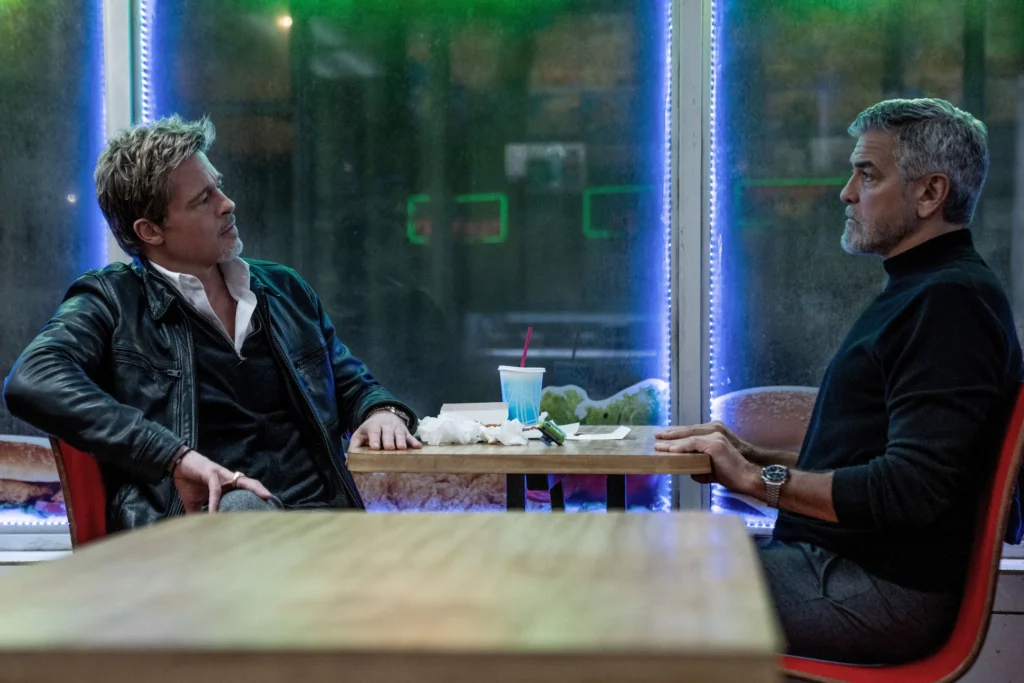
If there’s one takeaway from Wolfs, it’s that a movie doesn’t need explosive set pieces or intricate plots to be engaging. Sometimes, all you need are two cool characters, a simple storyline, and a sense of style that speaks for itself. Clooney and Pitt are veterans who know exactly how to draw the audience in without overselling. Wolfs feels like a return to a classic formula—one that reminds us that charisma and chemistry can still go a long way in storytelling.
In a world where every film tries to outdo the last in complexity and intensity, Wolfs is a breath of fresh air, quietly redefining what it means to be “cool” in modern cinema. It’s a film that lets us sit back, relax, and enjoy a couple of pros at the top of their game. For fans of classic crime capers and unforced charisma, Wolfs is a must-watch—and a promising sign of what’s to come on Apple TV+.

Curious about what our monthly digest offers? Head over to our newsletter page to learn more, or simply sign up below to get The Stream Snob Monthly Digest with the best streaming picks, exclusive insights, and the latest trends across all major platforms, delivered straight to your inbox!
Subscribe to our newsletter!
Click here for my latest posts!